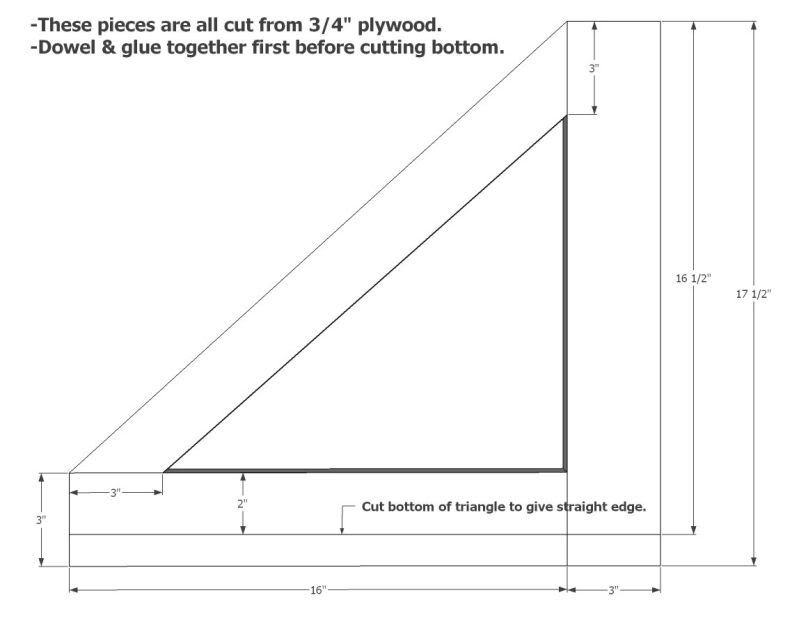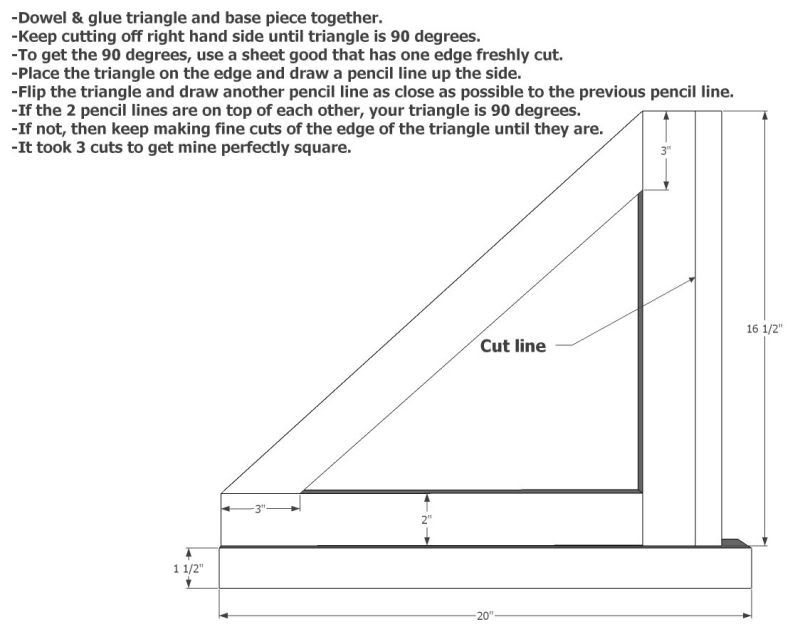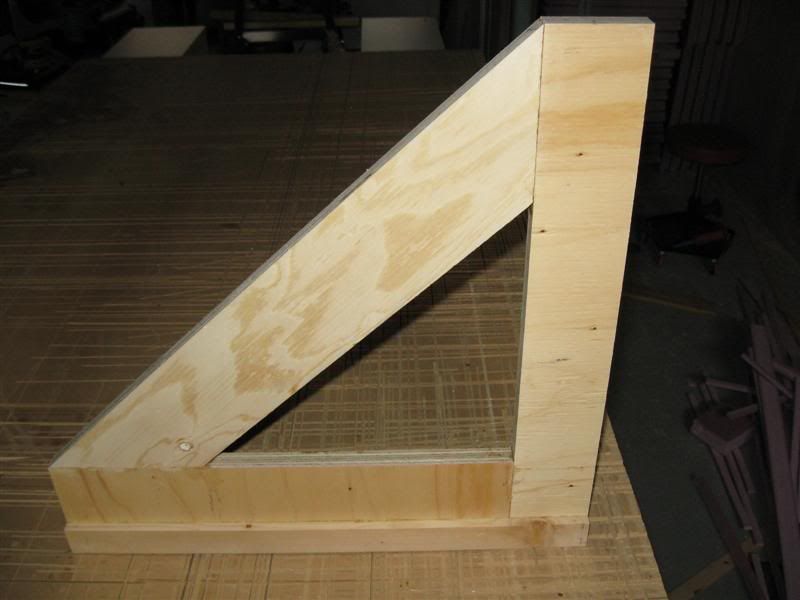My small speed square just wasn't cutting it anymore for trying to make square cuts in my sheet goods. I was going to buy a bigger one, but figured why not try making my own and saving some cash. This turned out to be not all that difficult to make and I used a piece of 2x4 for the base and a few pieces of 3/4" plywood for the triangle. It's a bit bulky, but I like that as it has some weight to it. You can also clamp it down pretty easily to hold it in place.
Basic steps:
1) Cut 2x4 so that you have a straight edge on a long side.
2) Assemble the 3/4" plywood pieces to form a basic triangle. Don't worry if it's not perfect, but try to get it close to 90 degrees. I doweled and glued these pieces together.
3) Once the glue has dried, cut a straight edge on the bottom of the triangle.
4) Join the triangle to the base. I again used dowels and glue. Just make sure the base overhangs on each side of the triangle. I had a 3/8" overhang on each side.
5) Now is the fun part...getting it square. I used a sheet of MDF that I make all my cuts on. I had one edge that was straight and I used that to run the base of my triangle along. Make 1 pencil line up the edge of the triangle and then flip it over and align the edge with the pencil line as close as possible and draw another vertical pencil line. The goal is to the the 2 pencil lines on top of each other. If they are not, then you need to keep making adjustment cuts to the side of your triangle until you get the 2 pencil lines perfect. It took me a few tries to get it right. Just remember to half the distance the 2 lines are out when making your adjustment cuts.
Here are some pictures to help simplify things a bit. My triangle ended up just over 18", but you can make your whatever size you like...just keep that in mind with the measurements below.




Basic steps:
1) Cut 2x4 so that you have a straight edge on a long side.
2) Assemble the 3/4" plywood pieces to form a basic triangle. Don't worry if it's not perfect, but try to get it close to 90 degrees. I doweled and glued these pieces together.
3) Once the glue has dried, cut a straight edge on the bottom of the triangle.
4) Join the triangle to the base. I again used dowels and glue. Just make sure the base overhangs on each side of the triangle. I had a 3/8" overhang on each side.
5) Now is the fun part...getting it square. I used a sheet of MDF that I make all my cuts on. I had one edge that was straight and I used that to run the base of my triangle along. Make 1 pencil line up the edge of the triangle and then flip it over and align the edge with the pencil line as close as possible and draw another vertical pencil line. The goal is to the the 2 pencil lines on top of each other. If they are not, then you need to keep making adjustment cuts to the side of your triangle until you get the 2 pencil lines perfect. It took me a few tries to get it right. Just remember to half the distance the 2 lines are out when making your adjustment cuts.
Here are some pictures to help simplify things a bit. My triangle ended up just over 18", but you can make your whatever size you like...just keep that in mind with the measurements below.




